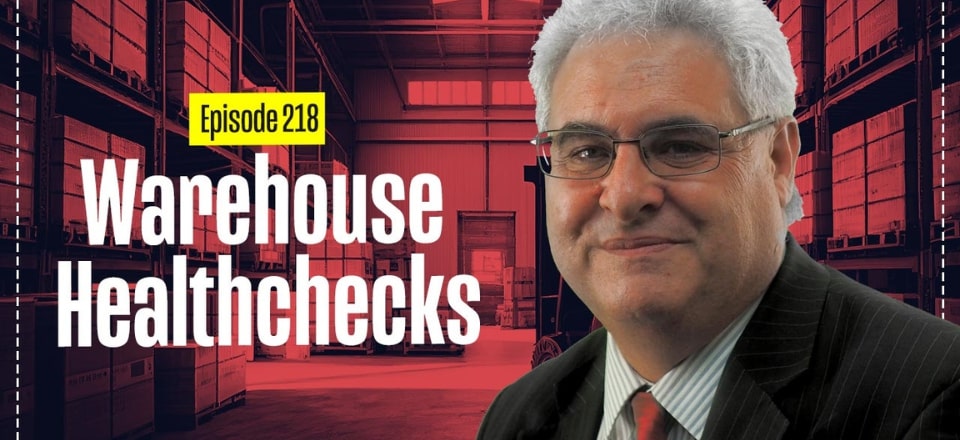It is important to conduct a health check for your warehouse.
This process will enable you to optimize capacity and processes, ensuring that your warehouse operates to its full extent effectively.
There may be several red flags in your warehouse that you haven’t noticed yet.
Watch the video below to learn about these indicators and elevate the performance of your warehouse.
This week’s discussion focuses on warehousing health checks, featuring John Monk from Logistics Bureau. John shares valuable insights into how these checks can identify and address inefficiencies in warehouse operations.
Identifying Common Warehouse Issues
One frequent issue revealed during warehousing health checks is the perception of a warehouse being full. While it may seem that there is no more room, often additional space can be uncovered through strategic reorganization. Clients might believe their warehouse layout is efficient, yet they might be losing time due to poor design. For instance, warehouses may appear congested because aisles are blocked or storage locations are not utilized effectively. By revising storage configurations, such as switching to an arrow aisle layout, it’s possible to boost capacity by 20-30%. This adjustment allows for better use of available space without the need for physical expansion.
Innovative Solutions for Increasing Capacity
A common solution to increase warehouse capacity is adding a mezzanine floor. While this approach can be effective, it has its own set of challenges. Mezzanine floors can be costly and may slow down operations due to additional levels requiring more equipment, like elevators. For some warehouses, alternative methods might be more suitable. Using high-density shelving systems or incorporating mobile equipment can optimize space without the need for a mezzanine. Additionally, articulated forklifts can be employed in narrow aisles, enhancing maneuverability and allowing for tighter aisle configurations, thus improving overall space utilization.
Maximizing Warehouse Efficiency
Another important aspect of improving warehouse operations is maximizing efficiency in workflows. One method to quickly assess efficiency is the “dust test,” where dust accumulation on products near the dispatch area indicates that these items are slow-moving. This suggests that high-turnover items should be positioned closer to packing and dispatch areas to minimize travel time and increase picking efficiency. Observing congestion in key areas such as receiving docks can also highlight workflow bottlenecks. Addressing these bottlenecks, such as delays in receiving or put-away processes, is crucial for maintaining smooth warehouse operations.
Practical Tips for Warehouse Assessment
For those evaluating their warehouse operations, several practical tips can help identify inefficiencies. Begin by examining the layout and observing how far employees travel during their tasks. High travel distances often point to poorly optimized storage locations. Additionally, checking for congestion in various areas of the warehouse, from receiving to dispatch, can reveal critical issues affecting overall efficiency. Implementing these observations and adjustments can lead to significant improvements in warehouse performance and capacity.
Related articles on this topic have appeared throughout our website, check them out:
- Warehouse Product Slotting: The Ultimate Guide
- The 7 Principles of Warehouse and Distribution Centre Design
- Planning a Warehouse Network and Design: Key Factors to Consider
- Spotlight on: 7 Key Warehouse Processes
- 10 Proven Principles for Best Warehouse Design and Operation
Editor’s Note: The content of this post was originally published on Logistics Bureau’s website dated December 27, 2023, under the title “Warehouse Health Checks with John Monck“.


